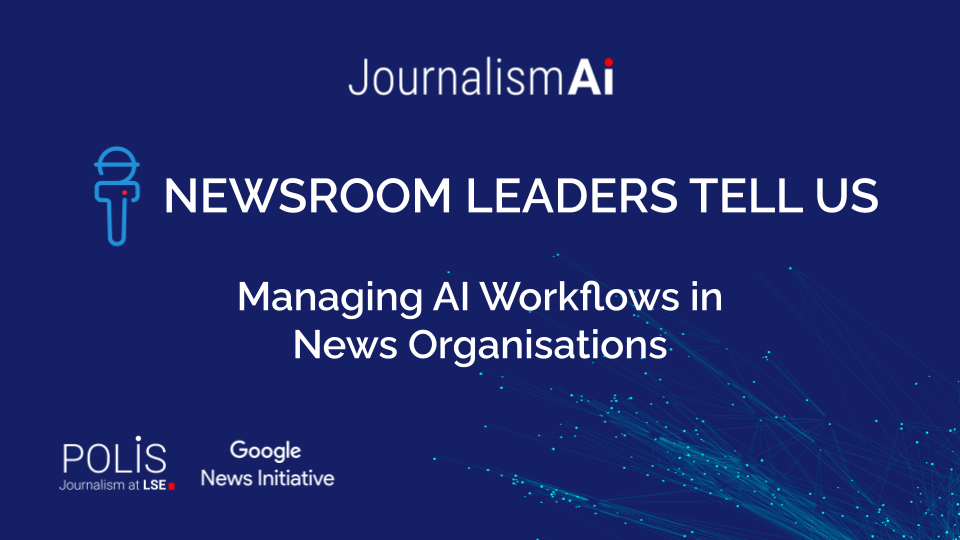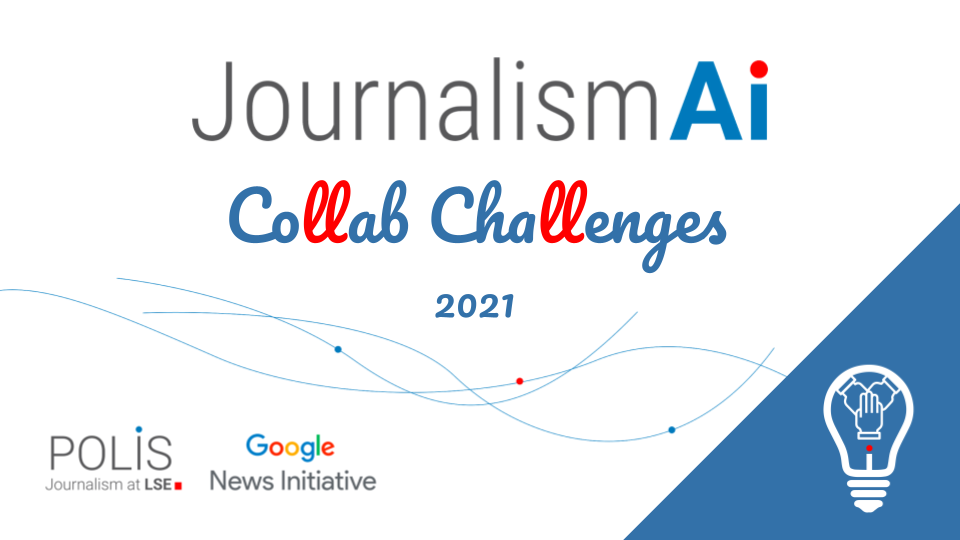JournalismAI and the Google News Initiative have been working together since early 2019 to break down the barriers that confine artificial intelligence in the minds of many journalists to the realm of IT – or even science fiction.
At the first JournalismAI Festival, in December 2020, Samya Ayish (News Lab Teaching Fellow at the Google News Initiative), Anatoliy Bondarenko (Deputy Editor-in-Chief of the Ukrainian data-journalism agency Texty), and our own Mattia Peretti shared an array of learning tools and case studies for how machine learning, deep neural networks, and other AI-powered technologies can be used in newsrooms big and small.
“We started to invest heavily in AI because it allowed us to do projects that a newsroom of our size never could..”
Anatoliy Bondarenko, Texty
Key Takeaways
- Journalists should not feel threatened by the complexities of AI. As said by Samya: “It’s once you familiarise yourself with these new approaches that you start recognising new potential solutions”.
- AI can allow small newsrooms to obtain results that would be impossible without the support of technology.
- In small newsrooms, AI is best leveraged if approached as a strategic priority with a holistic perspective.
- Machine learning can provide new means of tracking the proliferation and impact of mis- and disinformation.
How to Leverage the Power of ML
For small news organizations like Texty, aggressive investment in AI technologies makes possible a range of investigative projects that would have been unthinkable just five years ago. As Anatoliy explains, Texty’s data team makes up nearly half of its 15-person staff, making it larger even than those boasted by many mid-sized news organizations. The incorporation of machine learning as a core aspect of Texty’s reporting model has been incredibly successful (just ask the Sigma Awards!).
However, Samya warns that, based on her fieldwork across North Africa and the Middle East, it is hard to make AI a priority in a local newsroom if you cannot even count on stable electricity and Wi-Fi access. However, Samya adds, if journalists want to develop an understanding of these new technologies, the introductory courses developed by JournalismAI are a great place to start.
In his presentation, Anatoliy shared some examples of projects that Texty was able to develop using machine learning. The best example is their successful investigation “Leprosy of the Land“, in which they used deep neural networks to sift through thousands of satellite images in search of traces of illegal amber mining in the Rivne region of Ukraine. Without such technology, Texty’s small team could never have collected and analysed sufficient data at this scale.
Machine learning can also provide new means of tracking the proliferation and impact of disinformation. To trace the spread of Russian-helmed disinformation campaigns in Ukraine, Texty’s data team used deep neural models to scrape 400 data sources in search of stories pertaining to social and political issues. It then sifted through those results in search of “manipulated news,” before sorting the results by issue. This award-winning project would be unthinkably time-consuming to produce without the implementation of AI.
Additional Resources
- Take the online course “Introduction to Machine Learning“
- Take the online course “Hands-on Machine Learning“
- Check out other JournalismAI training resources and recommendations
- Explore Leprosy of the Land, an ML-powered investigation by Texty
- Explore Hot Disinfo from Russia, an investigation by Texty into the dynamics of Russian disinformation
This article was written by Mara Veitch, POLIS intern and LSE’s MSc student, and edited by Sabrina Argoub, JournalismAI Community Coordinator.
The article includes the main takeaways from one of the sessions of the 2020 JournalismAI Festival. You can watch all the Festival recordings on YouTube.
JournalismAI is a project of POLIS and it’s powered by the Google News Initiative.






